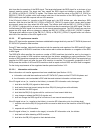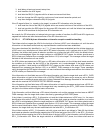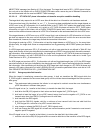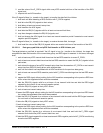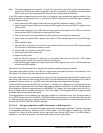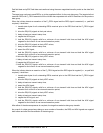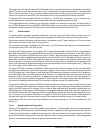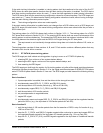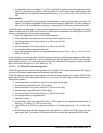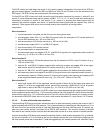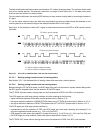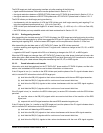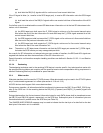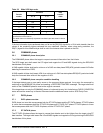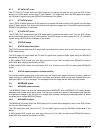
70 Parallel SCSI Interface Product Manual, Rev. A
4. simultaneously assert and negate P1, P_CRCA, and DB(15-0) signals at twice the negotiated transfer
period (i.e., simultaneously repeat a 1100b bit pattern 12 times on each signal) while asserting and
negating REQ at the negotiated transfer period 24 times [e.g., (2 x 6.25 ns) x 24 = 300 ns at Fast-160];
and
Start of section C
1. assert and negate REQ at the negotiated transfer period 64 times and at the same time assert and
negate P1 at twice the negotiated transfer period while repeating a 0000010011111011b bit pattern on
each of the P_CRCA and DB(15-0) signals [e.g., the equivalent of 128 transfer periods at Fast-160].
The SCSI initiator port shall begin its training pattern independent of the start of the SCSI target ports training
pattern if it detects the SEL, MSG, and I/O true and C/D false on the first assertion of the REQ signal. The SCSI
initiator port shall transmit the following training pattern:
1. assert ACK signal within 200 ns of the first REQ assertion;
2. if precompensation is enabled then set the drivers to the strong driver state;
3. wait the equivalent of 32 transfer periods (e.g., 200 ns at Fast-160);
4. negate ACK signal;
5. wait the equivalent of 32 transfer periods (e.g., 200 ns at Fast-160);
6. set precompensation to negotiated state; and
7. assert and negate ACK signal at the negotiated transfer period for 400 ns, (e.g., (2 x 6.25 ns) x 32 =
400 ns at Fast-160.
At the completion of its training pattern, the SCSI target port continues asserting and negating the REQ signal
at the negotiated transfer period (e.g., 6.25 ns transfer period at Fast-160) and the P1 signal at twice the nego
-
tiated transfer period (e.g., 12.5 ns transfer period at Fast-160). When the SCSI target port is ready to transfer
data it shall reverse the phase of P1 (see
Section 3.5.3.2).
3.5.3.1.2 DT DATA OUT phase training pattern
The SCSI target port shall request a training pattern on a DT DATA OUT phase by asserting the SEL signal a
minimum of two system deskew delays before asserting the REQ signal.
The SCSI target port shall begin its training pattern only after all the signal restrictions between a SELECTION
phase and a DT DATA OUT phase listed in
Section 3.2.1.2 are met. The SCSI target port shall transmit the fol-
lowing training pattern:
1. if precompensation is enabled, set the drivers to the strong driver state;
2. simultaneously assert REQ and P_CRCA signals;
3. wait the equivalent of 32 transfer periods (e.g., 200 ns at Fast-160);
4. simultaneously negate REQ and P_CRCA signals;
5. wait the equivalent of 32 transfer periods (e.g., 200 ns at Fast-160);
6. set precompensation to negotiated state;
7. negate SEL signal;
8. simultaneously assert and negate REQ and P_CRCA signals at the negotiated transfer period 32
times (e.g., (2 x 6.25) x 32 = 400 ns at Fast-160);
9. negate REQ and P_CRCA for at least the equivalent of 16 transfer periods (e.g., 100 ns at Fast-160);
and
10.the SCSI target port shall begin asserting and negating REQ to indicate to the SCSI initiator port valid
data may be sent. The number of REQ assertions shall not exceed the negotiated REQ/ACK offset.



